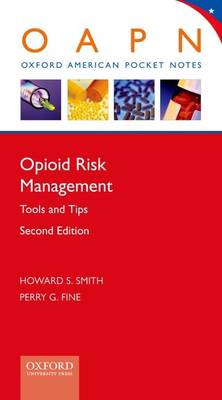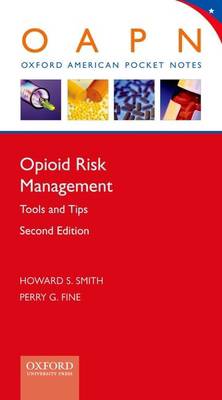
- Afhalen na 1 uur in een winkel met voorraad
- Gratis thuislevering in België vanaf € 30
- Ruim aanbod met 7 miljoen producten
- Afhalen na 1 uur in een winkel met voorraad
- Gratis thuislevering in België vanaf € 30
- Ruim aanbod met 7 miljoen producten
Omschrijving
Chronic pain is one of the most common and debilitating health care conditions, and among the most notoriously challenging to treat. Chronic non-cancer pain presents a significant burden to society in terms of lost workforce productivity and significant healthcare resource utilization and cost. Although controversies persist surrounding the use of opioid analgesics, consensus now exists among medical experts that they can be useful for carefully selected patients. Safe opioid prescribing, however, hinges on effective risk management. All clinicians who treat pain with opioids are obliged to implement therapy according to accepted principles of prescribing and to minimize the risk of misuse, abuse, addiction, and diversion through risk assessment and management strategies. Proper risk assessment allows for a care plan that is structured to optimize therapeutic outcomes while minimizing risks of potential opioid-related morbidities or problematic drug-related behaviors as effectively as possible. Opioid Management Tools and Tips provides health professionals with basic guidance, tools, and resources for identifying patients who may be at risk for opioid misuse and effective managing the risk of abuse, addiction, and diversion. This second edition contains updated guidelines on opioid selection as well as legal and regulatory resources.
Specificaties
Betrokkenen
- Auteur(s):
- Uitgeverij:
Inhoud
- Aantal bladzijden:
- 64
- Taal:
- Engels
- Reeks:
Eigenschappen
- Productcode (EAN):
- 9780199862054
- Verschijningsdatum:
- 21/11/2013
- Uitvoering:
- Paperback
- Formaat:
- Trade paperback (VS)
- Afmetingen:
- 94 mm x 165 mm
- Gewicht:
- 45 g

Alleen bij Standaard Boekhandel
Beoordelingen
We publiceren alleen reviews die voldoen aan de voorwaarden voor reviews. Bekijk onze voorwaarden voor reviews.








